Shipwrecks
In the days of
sail powered vessels, before steam engines were
invented, the shoreline of the East Coast of
Fife would be a very dangerous place for craft
that were powered only by the wind. With the
prevailing winds in the Firth of Forth being
from the southeast and the southwest it would be
very easy for a vessel with only sail for power
to be driven ashore in a gale.
Ever since I was a
boy, straight down from the Cross
Wynd at Earlsferry and at low
tide, I've been finding bits of wood that are
all of the same type and age, lodged in the
crevices of the rocks. One time just as the
tide was rushing in I found a section of wood
that would have to have been from the keel of a
very large vessel. This piece was about fifteen
inches square and maybe six feet long. It had
empty holes such as a keel would have for
through bolts. I could roll it as the tide was
coming in but I couldn't up-end it.
Another large piece that I found contained
splice joints that are like nothing that present
day people would make or use. All of the
pieces appear to be hundreds of years and
possibly thousands of years old. In this same
debris field I've found very old pieces of iron
objects. Some quite large. One day as I walked
with a friend on the beach and along the tide
line a wave uncovered a gold coin. My friend
picked it up. I took the coin to the
Edinburgh library and
for a whole day I sat in the library going over
many books of ancient coins to try to identify
the coin but I never found a match.
Over the years my
brother John had quite a collection of barnacle
encrusted iron objects that looked like they had
been musket barrels and swords that he gleaned
from the rocks at low tide. One day at the
extreme of a very
low tide I found a very heavy and old iron anchor
that with help from others I managed to salvage.
I'm firmly
convinced that in gale from the south a very
large vessel was driven on to the
Thill Rock that
lies straight offshore. Today the
Thill is marked with
a buoy. In ancient times it would not have had a
marker. But marked or not a large vessel in a
gale from the south could have been driven
straight on to the Thill
and wrecked. I think that such a tragedy
did happen and that the vessel foundered and
later became embedded in the sunken shifting
sands and that storms to this day continue to
churn up bits that keep coming ashore. Who
knows? This wreckage could be the remains of a
long lost Spanish Galleon treasure ship.
I've also wondered
if the stone coffins that were unearthed nearby
at just above the high tide mark at
Earlsferry could
have a connection to this wreck.
I know that the
next time I return to
Earlsferry and I go raking down in
the rocks I'll find more bits of this ancient
vessel.
And
who knows what else? Another "Atocha",
maybe?
This
photo of a rust and barnacle encrusted cannon
was recently sent to me by Alex Reekie, an ex
fisherman and native of St. Monans, who now
lives in New Zealand. Somewhere in the Firth of
Forth is the rest of the vessel that this old
cannon was on.
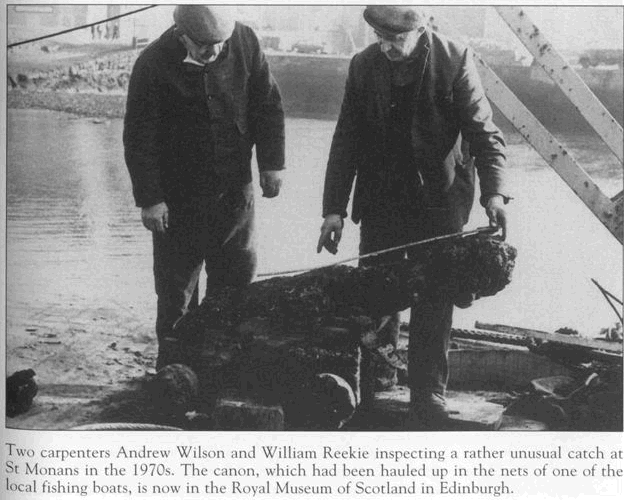
At
the foot of Monty Moncrieff's, Seaforth, Elie,
garden where it overlooked the sea was another
old cannon that I'd say was identical to this
recently found one. Monty donated his cannon for
scrap iron to aid the World War II shortage of
metals.
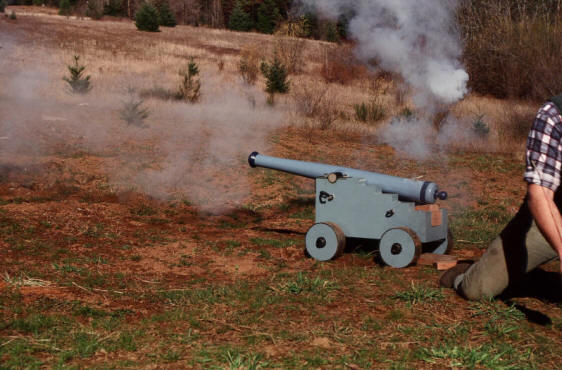
Cannon
that I made in the 1970s
I later
added a precision elevating screw mechanism to
replace the
wooden blocks and an aiming sighting
device
that is extremely accurate.
Strangely enough, in the 1970's, in my area
an informal recreational black powder cannon
shooters club was formed in which each
member was required to construct his own cannon.
I made my cannon from the rear, breech end, half length of
a brand new 40 mm. anti aircraft ship mounted gun barrel
that I got from a U.S. battleship that was being
broken up in Zidel's navy ship breaking scrap iron
yard on the Willamette River in Portland Oregon. My cannon
I made from memory to be similar to the cannon
that was in Monty Moncrieff's garden and it is remarkably
similar to the
above recently salvaged cannon of yester year. Our
firing range was a mile or more long farm field
that was owned by one of the club members.
December 2009: It's only a few weeks ago that I learned from Alex
Reekie in New Zealand of the
cannon that was dredged up in the net of a St.
Monans fishing boat. Strangely enough one of the
men in the photo who is inspecting the cannon is another Reekie. Now me
having an
interest in old ships and muzzle loading black
powder cannons to the point
of constructing, firing and owning such a cannon
as would have been aboard an ancient vessel, is just
not your every day interest and hobby. I wonder
if the man-of-the-sea who had been aboard the
vessel that the cannon came off and whose job it
was to fire the cannon might have been a Spanish forebear by
the name of Ricci, Riekie, Reikie or Reekie? Far out speculation? Maybe. Maybe not.
(A few statistics of my, Reekie, cannon: Weight,
300+ pounds. Muzzle loaded, rifled barrel.
Bore, 40 m.m., approx. 1 and 5/8 inch diameter.
Cast projectile bullet weight, 1 pound hard
lead. Priming charge, Triple F grade black
powder. Firing charge, Double F grade black
powder. At 100 yards the bullet, even though
it's made of lead, goes clean through 1/2 inch
thick mild steel plate. I estimate that at 1
mile range the trajectory is about 80 feet. I first proof fired my
cannon by loading it with 3 times the measure of
black powder that I considered would be it's
normal charge. In front of this overload of
black powder I rammed 3, one pound lead slugs
down the barrel before touching it off. For that
first test shot, for me to get far enough away,
instead of using the lanyard to fire the cannon,
I used several feet of fuse, one end
of which I inserted into the touch-hole before I
lit the other end and ran for cover. After each
firing it became my practice to swab the bore
with a long handled wet and greased mop. All of the projectiles that
I recovered were expanded to the full extent of
the barrel's rifling.)
The largest
shipwreck that I've seen on these shores was the
SS Wearbridge, a
large steamship that broke loose while it was
being towed. This ship was blown ashore
and ran aground at the end of the
West
Sea road at West Bay. That event caused a lot of
local excitement. Men of the Coast Guard arrived
on the scene and fired line carrying rockets at
the ship. After several attempts a line was
finally put aboard the vessel. From this
messenger line a pulley system was set up to get
a heavy rope aboard the ship. To this rope was
attached a breeches buoy system and one by one
the crew were taken off the ship. Mostly their
trip from ship to shore was by them being
dragged through the sea. About a month later at
the height of a high tide, two powerful tugs
managed to haul the ship off the rocks.
|
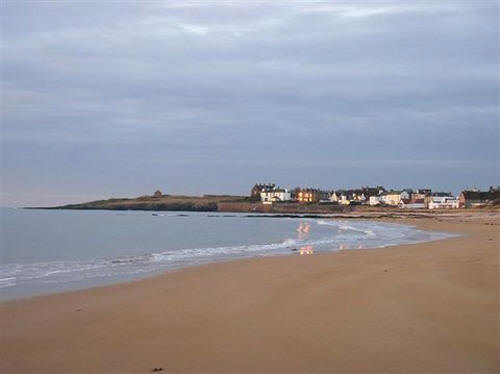
|
|
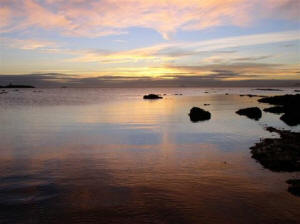
|
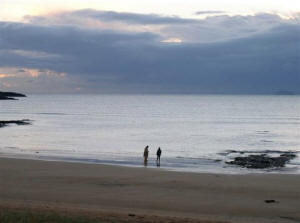
|
|
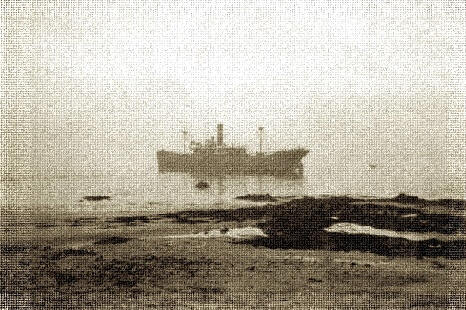
S S Wearbridge
Photo by Archie Campbell |